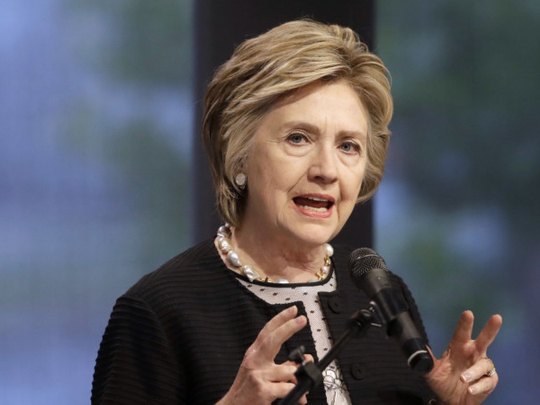
Senator Dianne Feinstein has announced that she’ll be running in 2018 for a fifth term, and since she’ll be 85 next year, that would mean if she wins she’d serve until the age of 91, putting her in a select club. Only four senators in American history have served past the age of 90.
Meanwhile, the top Democratic leadership in the House is getting a bit long in the tooth as well: Minority leader Nancy Pelosi is 77, minority whip Steny Hoyer is 78, and assistant Democratic leader James Clyburn is 77. It’s critical to understand that the Democratic Party can’t decide that it’s time for them to go, because the Democratic Party isn’t an entity with a singular will. If a new generation is going to step forward, individuals are going to have to make their own decisions to do so.
Let’s start with Feinstein. While she still seems to have her wits about her, it’s just not practical to think that someone in his or her late 80s and even early 90s can function with the effectiveness he or she did when younger. It’s true that Jerry Brown, aged 79, is carrying out one of the most vigorous and consequential governorships anywhere in America right now, but even 79 is different from 91.
There are Democrats considering running against her, including Kevin de Len, who is currently the President Pro Tempore of the state senate. California uses a “jungle primary”, in which all primary candidates run on one ballot and the top two finishers — usually two Democrats in statewide races — face off in the general election. That means that to win, an opponent would have to beat Feinstein twice. But it hardly seems insurmountable — her approval ratings are reasonable but not great, and she’s not the kind of politician who inspires fervent affection. So what it would take to oust her is an opponent (or opponents) willing to take a risk on upending the status quo.
That applies to the House as well, though there the situation is somewhat different. Nancy Pelosi has said that if Hillary Clinton had won the 2016 election she would have retired, but she’s sticking around to fight President Donald Trump. Those who understand Congress will tell you that Pelosi has been one of the most capable and effective party leaders in American history, both in the opposition and the majority. But if there’s one glaring failure in her tenure it’s the fact that she hasn’t effectively prepared a line of succession. This happened at a time when, as Paul Glastris and Haley Sweetland Edwards described in 2014, power in the House had become more centralised in the leadership, leaving members fewer opportunities to advance on their own without the blessing of those atop the hierarchy.
The only member of the House who has really tried is Tim Ryan of Ohio, whose argument comes down to “I’m from Youngstown where lots of working-class white people live, so I should be a party leader because Youngstown white people Youngstown.” It’s not exactly persuasive. And the “Pelosi should step aside because Republicans air ads mocking her” argument is idiotic; no matter who leads the Democrats, they’ll be denigrated and demonised by the GOP as sure as the sun will rise in the east tomorrow.
In short, Democrats should be looking for new leadership, but not because they need to do it if they’re going to win in 2018 and 2020. Both of those elections will turn mostly on how Americans feel about Trump. They should do it because they’ll have to eventually no matter what, and it’s never too early to start preparing. But if it’s going to happen, younger Democrats are going to have to take a risk, step up, and convince people that they’re capable of carrying the party forward.
— Washington Post
Paul Waldman is a contributor to The Plum Line blog and a senior writer at The American Prospect.








